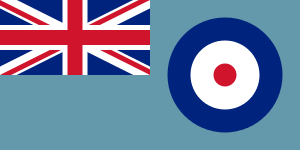RAF Bitteswell
| RAF Bitteswell | |||||||||||||||||||
|---|---|---|---|---|---|---|---|---|---|---|---|---|---|---|---|---|---|---|---|
| IATA: none – ICAO: none | |||||||||||||||||||
| Summary | |||||||||||||||||||
| Airport type | Royal Air Force station | ||||||||||||||||||
| Owner | Ministry of Defence | ||||||||||||||||||
| Operator | Royal Air Force | ||||||||||||||||||
| Location | Bitteswell, Leicestershire | ||||||||||||||||||
| Built | 1939 | ||||||||||||||||||
| In use | 1940-1987 | ||||||||||||||||||
| Elevation AMSL | 407 ft / 124 m | ||||||||||||||||||
| Coordinates | 52°27′34″N 001°14′46″W / 52.45944°N 1.24611°WCoordinates: 52°27′34″N 001°14′46″W / 52.45944°N 1.24611°W | ||||||||||||||||||
| Map | |||||||||||||||||||
 RAF Bitteswell Location in Leicestershire | |||||||||||||||||||
| Runways | |||||||||||||||||||
| |||||||||||||||||||
Royal Air Force station Bitteswell or more simply RAF Bitteswell is a former Royal Air Force station located 2.0 miles (3.2 km) west of Lutterworth, Leicestershire and 6.1 miles (9.8 km) north of Rugby, Warwickshire, England.
RAF Bitteswell opened in June 1940[1] and closed in December 1987. The base had one B1 Hangar and two T2 Hangars. The original grass runways were replaced between July and December 1941 with concrete and asphalt.[2]
History
Second World War
RAF Bitteswell was home to many different units and aircraft, such as No. 1513 (Beam Approach Training) Flight (BAT Flt) flying Airspeed Oxfords from RAF Bramcote, RAF Lindley and Bitteswell between 23 October 1942 and 13 May 1946.[3]
A large number of operational training units (OTU) were based at the airfield. OTU were units which taught flying, navigation and basic Morse code. The difference between OTUs and other training units were that the OTUs performed live missions such as bombing (like the 1,000 Bomber raids), air sea rescue and occasionally mine laying. No.18 Operational Training Unit (OTU) flying the Avro Anson, Fairey Battle and the Vickers Wellington again flying from Bramcote, Nuneaton and Bitteswell. The unit was operational from 14 November 1940 and 25 January 1943 and was RAF Bomber Commands Polish training unit.[4]
- No. 29 Operational Training Unit RAF (29 OTU), utilising the Vickers Wellington, used Bitteswell as a satellite from their main base at RAF Bruntingthorpe, from 1 June 1943 to 1 November 1944.[3]
- No. 105 (Transport) Operational Training Unit RAF flying the Wellington and the Douglas Dakota from Bramcote and Bitteswell, between 5 April 1943 and 19 November 1945.[3]
Post war units
A number of units used the airfield as an satellite to disperse aircraft and for maintenance such as Transport Command Aircrew Examination Unit from RAF Bramcote from December 1945 until August 1946, No. 266 Maintenance Unit RAF between January 1946 and 1947 and No. 20 Service Flying Training School from RAF Church Lawford used Bitteswell as an relief landing ground between July 1946 and May 1947.[2]
Aircraft manufacture
Between 1943 and March 1983 the airfield was used by a number of aircraft manufacturers including Armstrong Whitworth Aircraft (AWA), Whitworth Gloster, Hawker Siddeley and British Aerospace for final assembly, flight testing and overhauls of many of the companies aircraft.[2]
Aircraft operated
Data from[2]
- Avro Lancaster
- Gloster Meteor
- Hawker Sea Hawk
- Hawker Hunter
- Gloster Javelin
- Armstrong Whitworth AW.660 Argosy
- Avro Shackleton
- Avro Vulcan
- Folland Gnat
- BAE Hawk
Accidents and incidents
| Date | Incident | Reference |
|---|---|---|
| 29 September 1941 | Wellington R3216 of No.18 Operational Training Unit (OTU) stalled on landing | [5] |
| 6 September 1943 | Wellington BK442 of No.29 Operational Training Unit (OTU) belly landed following engine failure | [6] |
| 11 April 1944 | Miles Martinet JN427 of No.29 Operational Training Unit (OTU) overturned when landing | [7] |
| 5 March 1945 | Boeing B-17 Flying Fortress 44-6464 612 Bomb Squadron, 401 Bomb Group crashed after the crew baled out | [8] |
| 17 April 1945 | Wellington NC667 of No.105 Operational Training Unit (OTU) crash-landed in the circuit after engine failure | [8] |
Death of Hugh Reeves
Hugh Reeves was a British inventor and engineer. He was involved in a project to reduce noise in jet engines. While carrying out tests at RAF Bitteswell on a Hawker Hunter Mark V fitted with a Sapphire engine, he was suddenly drawn into the intake of the silencer and was killed.[9]
Current use
The airfield is now a large business park called Magna Park in which many roads have names relating to planes e.g. Wellington Parkway, Buccaneer Way, Hunter Boulevard and Vulcan Way.[1]
References
Citations
- ↑ 1.0 1.1 "RAF Bitteswell". Airfields of Britain Conservation Trust. Retrieved 25 March 2012.
- ↑ 2.0 2.1 2.2 2.3 "Bitteswell". Control Towers. Retrieved 26 March 2012.
- ↑ 3.0 3.1 3.2 "Flying units". Aviation Archaeology. Retrieved 27 March 2012.
- ↑ "18 (Polish) Operational Training Unit". Un-Official RAF Worksop. Retrieved 29 March 2012.
- ↑ "Military aircraft crashes in the south west Midlands - 1941". Aviation Archaeology. Retrieved 23 March 2012.
- ↑ "Military aircraft crashes in the south west Midlands - 1943". Aviation Archaeology. Retrieved 22 March 2012.
- ↑ "Military aircraft crashes in the south west Midlands - 1944". Aviation Archaeology. Retrieved 28 March 2012.
- ↑ 8.0 8.1 "Military aircraft crashes in the south west Midlands - 1945". Aviation Archaeology. Retrieved 29 March 2012.
- ↑ "MISINFORMATION". Timelapse. Retrieved 21 March 2012.
External links
| ||||||||||||||||||||||||||||||||||||||||||||||
